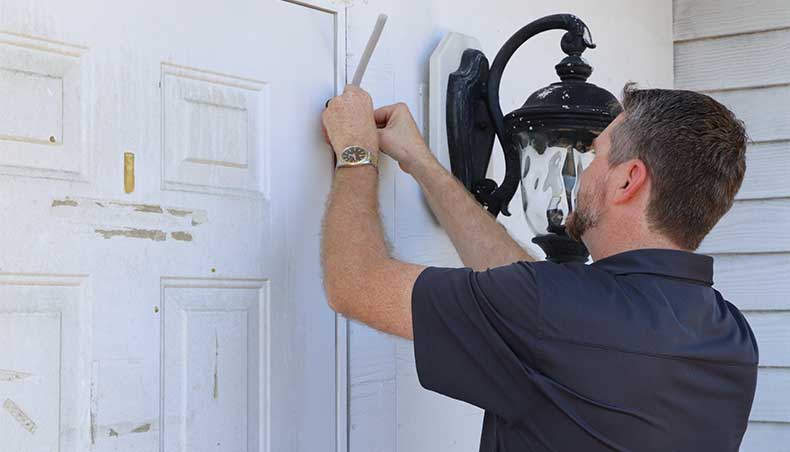You want to lower your energy bill, so you are conscientious and only run full loads of laundry, you’ve turned the thermostat up a few degrees, and you use the grill more than the oven. Still, you think you can do more. A simple but diligent home energy audit that you conduct yourself can help pinpoint some areas that are easy to address. As you’re doing the walk-through, keep a checklist of places you’ve inspected and problems you’ve found, so you can prioritize your energy efficiency improvements.
1Air Leaks
Check for gaps along the baseboard or edge of flooring, and where the walls and ceiling meet. Check windows and doors, lighting and plumbing fixtures and electrical outlets. Seal any leaks you find with caulk or weather stripping, and consider foam gaskets for electrical outlets.
2Attic Insulation
Make sure your attic hatch is insulated, weather stripped and closes tightly. In the attic, determine if pipes and ductwork are sealed, and close any gaps with an expanded foam caulk or similar permanent sealant. Check to see if there is a vapor barrier under the attic insulation, such as tarpaper or a plastic sheet. If not, consider painting the interior ceilings with vapor barrier paint. This will reduce the amount of water vapor that can pass through the ceiling, preventing structural damage and improving the effectiveness of the insulation. Make sure that attic vents aren’t blocked by insulation, and that the entire attic floor is covered with insulation with an R-value of 38.
3Crawl Space or Basement
If yours is unconditioned and open, you should have insulation under the living area flooring with a recommended R-value of 25. If your sub-space is enclosed with heating and cooling appliances and ductwork, you should probably insulate the sub-space perimeter rather than the living room floor. The insulation at the top of the foundation wall and first floor perimeter should have an R-value of 19 or greater. If the basement is intentionally conditioned, the foundation walls should also be insulated to at least R-19. Your water heater, hot water pipes and furnace ducts should all be insulated.
4Heating and Cooling Equipment
Replace air filters every 30 to 60 days, and have a professional inspection and cleaning completed annually. Check your ductwork for dirt streaks, especially near seams. These indicate air leaks and should be sealed with a duct mastic.
5Lighting, Appliances and Electronics
Consider replacing incandescent bulbs with CFLs or LEDs, and look for ways to use sensors, dimmers or timers to reduce lighting use. To prevent phantom loads, consider using smart power strips that can both detect when a device is in standby mode and cut the device’s power off.
Resources to help members save
Even if you do your home audit in stages, you should experience some savings. More detail on conducting your home energy audit is available. As always, BEMC energy experts are available to answer your questions at (800) 842-5871. Be sure to visit our website to learn more about resources to help you find energy savings.


